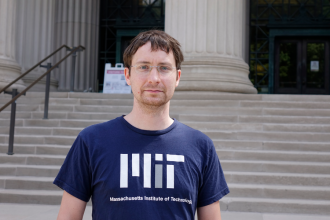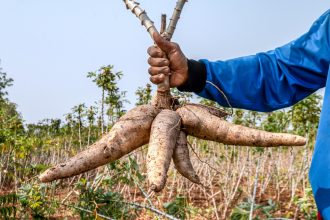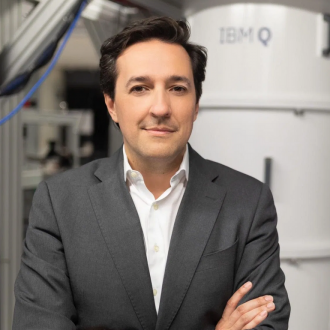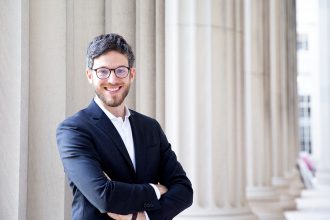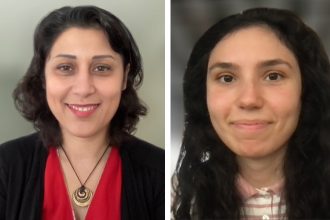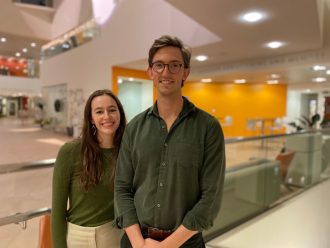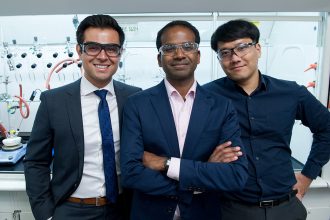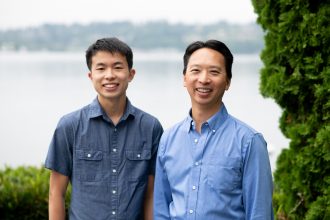School of Engineering hosts Indian dignitary for visit
On Tuesday, October 4, the MIT School of Engineering hosted Indian Ambassador to the US Taranjit Singh Sandhu, to engage in exciting discussions about climate and sustainability, healthcare, education, and the future of technology. As part of his visit, the ambassador met with students and faculty, and toured lab facilities. His visit was part of a series to area universities in which the ambassador aimed to strengthen partnerships in education, business, and innovation.
From bridges to DNA: civil engineering across disciplines
How is DNA like a bridge? This question is not a riddle or logic game, it is a concern of Johannes Kalliauer’s doctoral thesis.
Helping cassava farmers by extending crop life
The root vegetable cassava is a major food staple in dozens of countries across the world. Drought-resistant, nutritious, and tasty, it has also become a major source of income for small-scale, rural farmers in places like West Africa and Southeast Asia.
Startup lets doctors classify skin conditions with the snap of a picture
At the age of 22, when Susan Conover wanted to get a strange-looking mole checked out, she was told it would take three months to see a dermatologist. When the mole was finally removed and biopsied, doctors determined it was cancerous. At the time, no one could be sure the cancer hadn’t spread to other parts of her body — the difference between stage 2 and stage 3 or 4 melanoma.
Dario Gil announced as inaugural MIT School of Engineering and Schwarzman College of Computing Advanced Degree Ceremony Speaker
Dario Gil, PhD ’03, is the Senior Vice President and Director of Research at IBM, where he leads the IBM technology roadmap and technical community, directing innovation strategies in areas including hybrid cloud, AI, semiconductors, quantum computing, and exploratory science.
Building communities, founding a startup with people in mind
MIT postdoc Francesco Benedetti admits he wasn’t always a star student. But the people he met along his educational journey inspired him to strive, which led him to conduct research at MIT, launch a startup, and even lead the team that won the 2021 MIT $100K Entrepreneurship Competition. Now he is determined to make sure his company, Osmoses, succeeds in boosting the energy efficiency of traditional and renewable natural gas processing, hydrogen production, and carbon capture — thus helping to address climate change.
Launchpad for healthcare entrepreneurs
When Computation and Systems Biology PhD student Elvira Kinzina was diagnosed with Lyme disease during her first year at MIT, she struggled to find a doctor specializing in the disease – even though Boston is renowned for its thriving healthcare community. She soon found out this was common for Lyme patients, with many specialists booked out months, years, or indefinitely. Now she is involved with a new Independent Activities Period (IAP) program focused on healthcare entrepreneurship, developing an app that would help Lyme patients find doctors and answers sooner.
Brave Behind Bars: Prison education program focuses on computing skills for women
A programming language textbook might not be the first thing you’d expect to see when walking into a correctional facility.
Compassionate mentorship both inside and outside the lab
Although his professional expertise lies in developing chemical catalysts, MIT Visiting Professor Karthish Manthiram also makes sure to catalyze positive relationships with his graduate students.
Student, Alum Team Up to Combat Covid
“One of the reasons I like to interview for MIT is to be inspired—and maybe inspire a little bit back,” says George Hu ’89, a former Microsoft developer and creator of the language used for macros in Microsoft Excel. Hu says interviewing MIT applicants in his native Seattle is one way he stays connected to the alma mater that has had so much impact on his life and on the lives of students like computation and cognition major Darren Lim ’23, whom he interviewed in January 2019.

